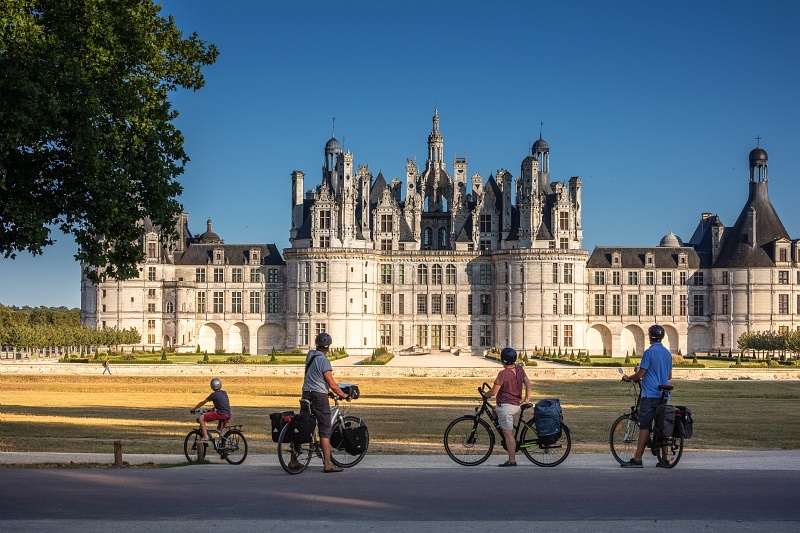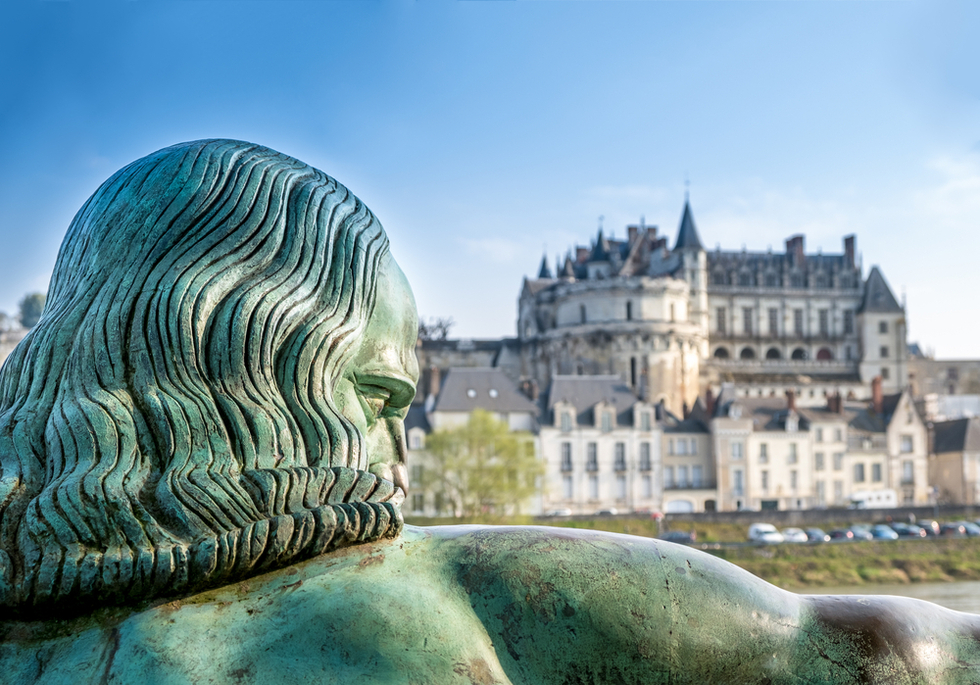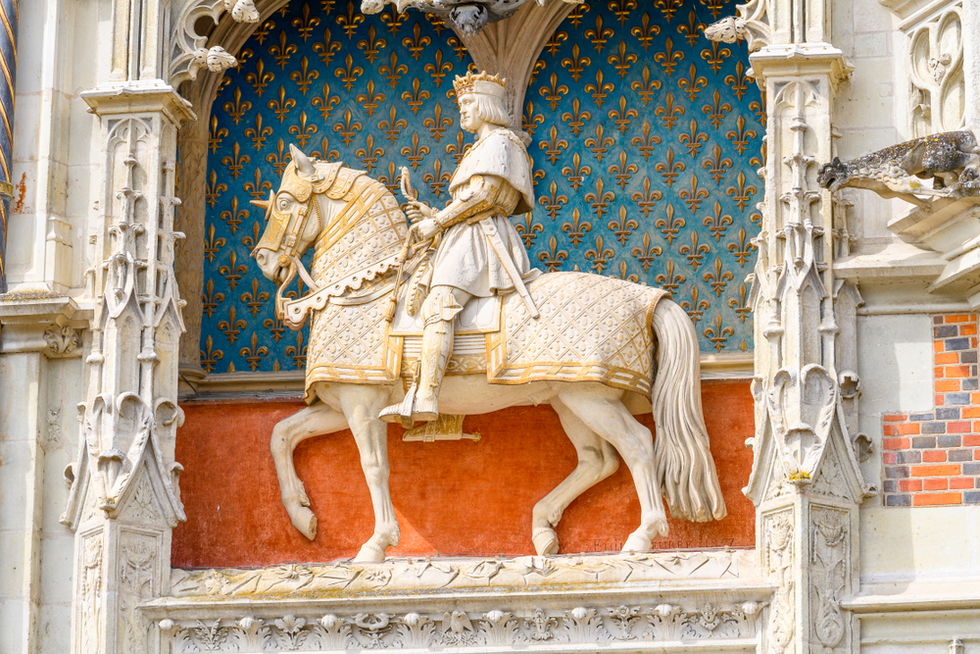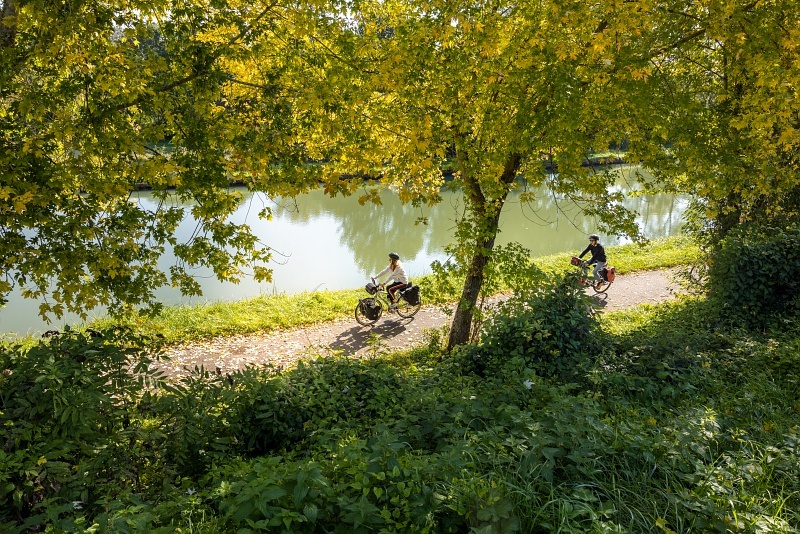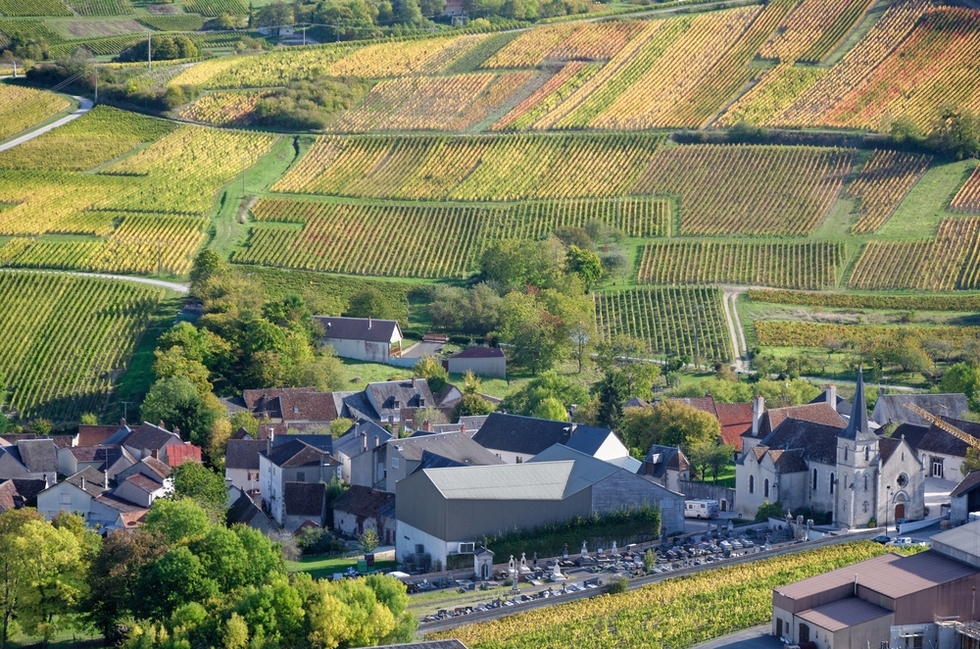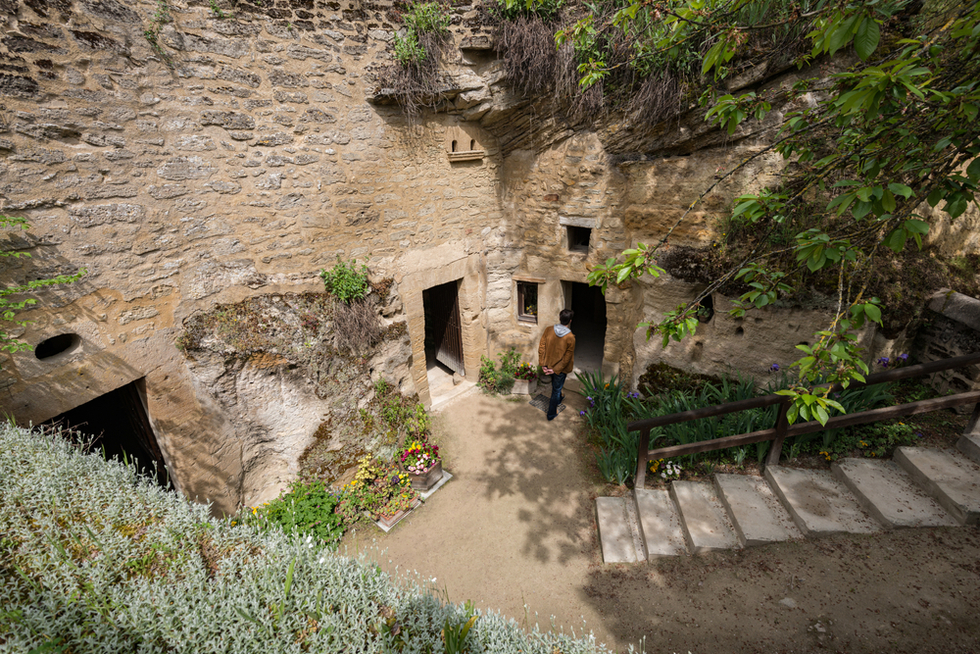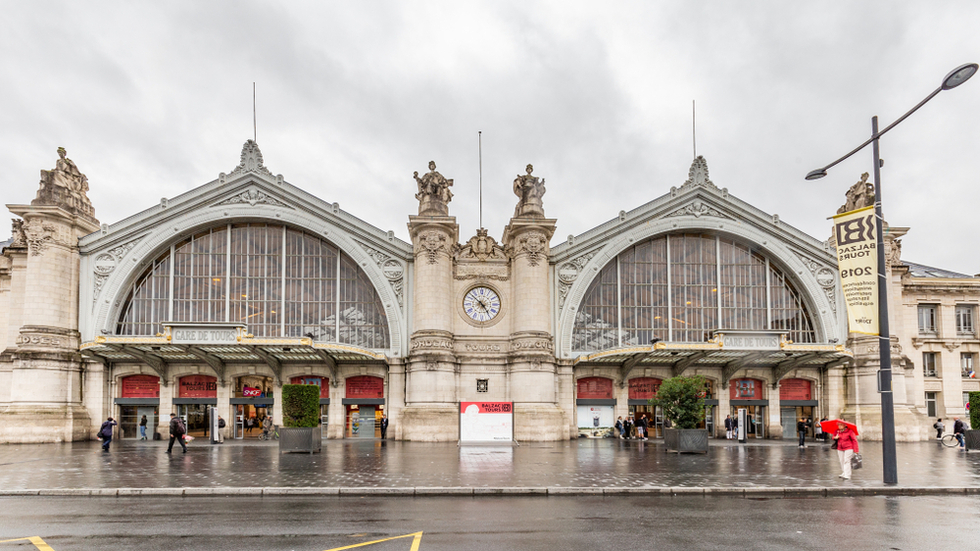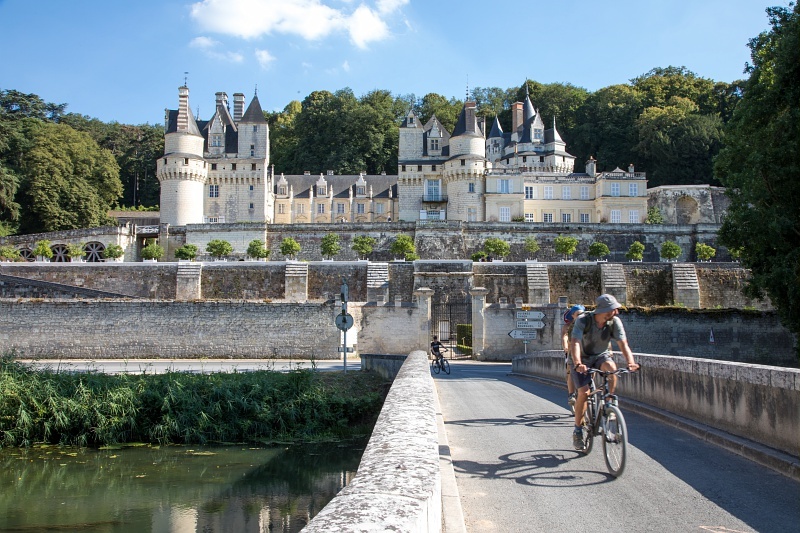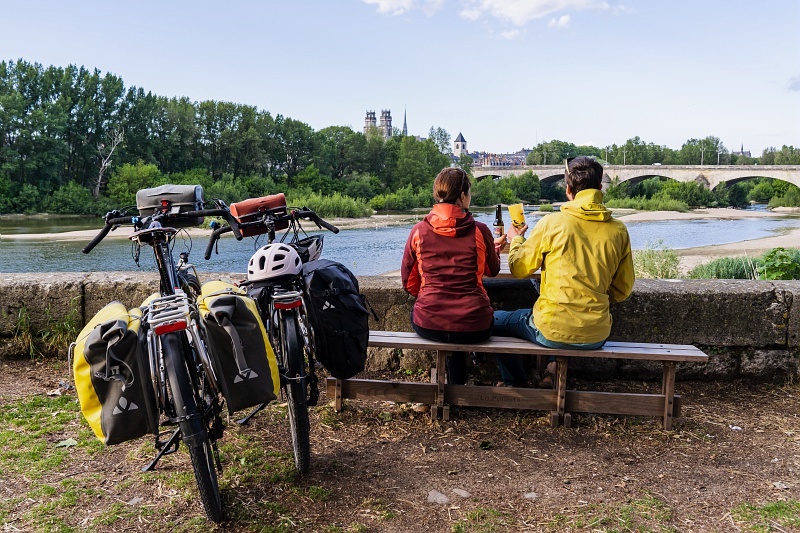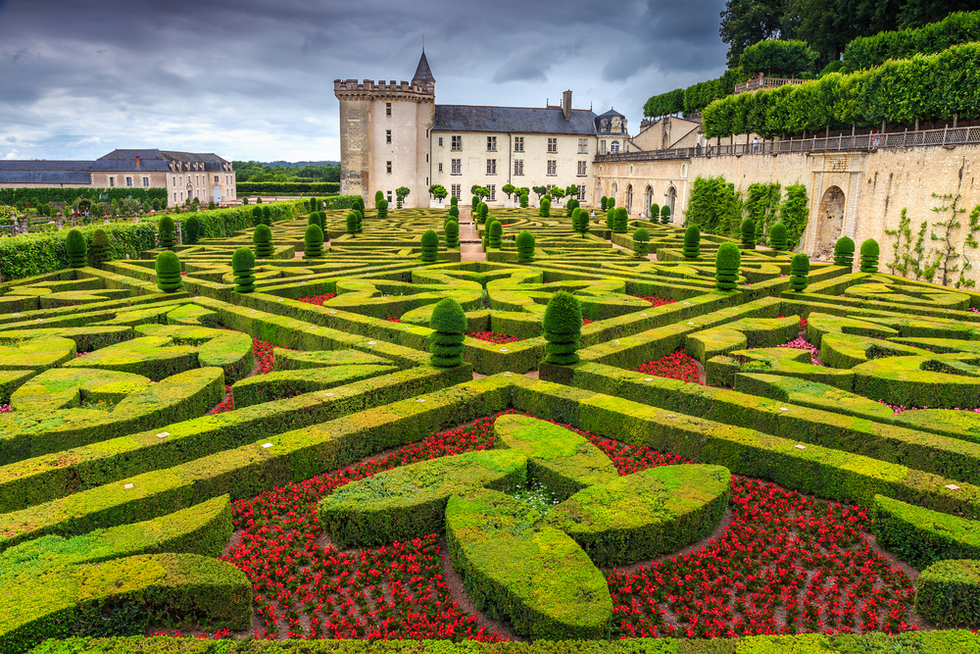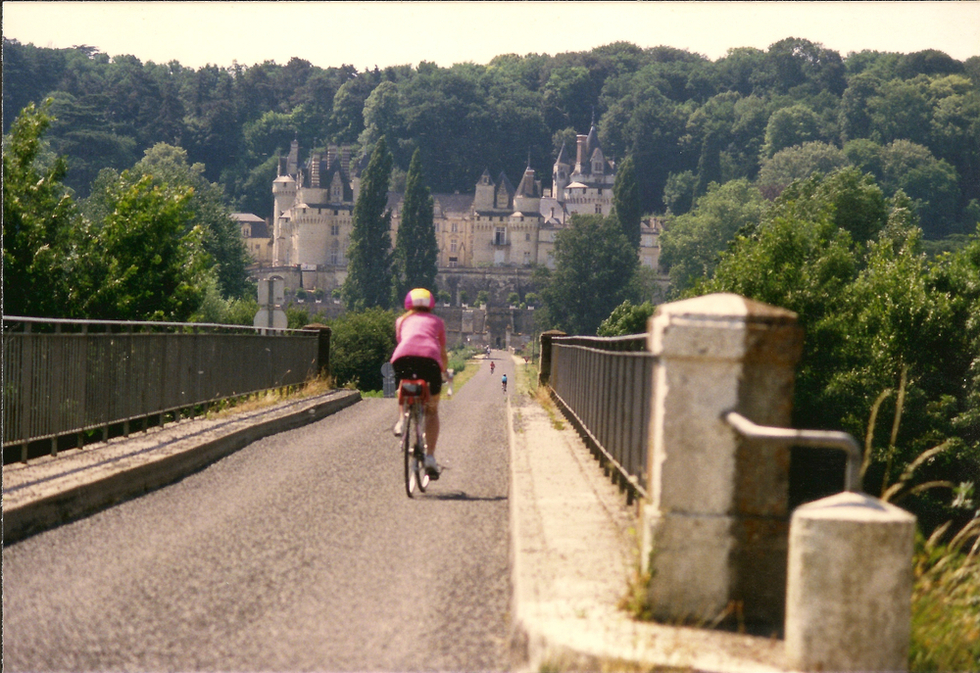Self-Guided Loire Valley Bike Tour: Seeing France’s Castles and Countryside on Two Wheels
By Margie RynnYou're riding down a country road in the Loire Valley of France, the wind in your hair, a field of sunflowers bowing their heads as you glide by. A fairy tale castle comes into view, you slow down, hop off, and spend a pleasant hour or so with French kings and queens of old, before you get back to your vehicle and move on. Are you driving a gas-guzzling convertible coupe? Crammed in a tour bus with 38 other chatty North Americans? No, you are at the helm of a stylish vélo, otherwise known as a bicycle. No combustion engines, timetables, or small talk for you. The road calls and you answer, “j’arrive!” (I'm on my way!)
Of course, creating a trip this fancy free requires a good dose of advance planning, especially in a region that’s inundated by some 8 million visitors a year. A UNESCO World Heritage Site, the Loire Valley is home to some 300 castles (chateaux), most of which were built in the 15th and 16th century, after victory in the 100 Years War led the French Kings, and the nobles of their court, to go on a building spree in this verdant valley. Many imported noted architects and artists from Italy to create pleasure palaces of unrivaled opulence. (Leonardo da Vinci was among them; a statue he made is above). These palaces still dazzle today.
To promote bicycle tourism, the regional government created a special route known as Loire à Vélo (Loire by Bike) for cyclists. Following it, and the advice on this route’s dedicated website, can make crafting a vacation in the Loire Valley surprisingly easy. If you visit off-season, you can probably get away with pedaling until you get tired and finding a place to sleep. But in high season, hotels, B&Bs, and even campgrounds get booked up. You’ll need to decide ahead of time where you want to go and how far you are going to ride each day.
Administered by the Centre-Val-de-Loire regional tourism agency, the Loire à Vélo is a 900-kilometer-long bikeway that stretches almost the entire length of France’s longest river. A combination of lightly frequented country roads and dedicated bike paths, it runs from Nevers in the east to Saint Nazaire in the west, where it empties out into the Atlantic.
Overall, the path itself is smooth and bike-friendly, give or take a couple of short cobblestoned stretches. Signage is generally good, though not on entering and leaving the larger towns—on the way out of Tours I found myself wandering lost around a university campus. Have a map on hand and when in doubt, follow the river.
Unless you are training for the Tour de France, you likely won’t be able to conquer the whole thing. Choose the section that suits you (we have advice on how to do so below). Most are as flat and easy-going as the river itself, though some sections go up hills that require a bit of calf muscle. You’ll probably be on a sturdy but heavy rental bike and carrying a certain amount of cargo, so don’t underestimate those inclines (like I did).
Don’t worry if you aren’t pumped, though. The Loire à Vélo accommodates all fitness levels—you’ll see everyone from cycling buffs on slick road bikes to seniors gleefully pedaling electric-assisted models. Couples haul small children (or dogs) in tiny trailers, while long-haulers plug along with baggage cleverly attached to various parts of their bike’s frame. And then there are the day trippers, who spin along light and easy with just a picnic in their front basket.
If you have never been to the Loire Valley, you’ll want to hit the most famous royal castles, like Amboise, Chenonceau, Blois (pictured above), and Chambord, which are mostly bunched up between the cities of Blois and Tours. Start this stretch in Blois so you can take advantage of an ever-so-slight downhill as you follow the river westward.
Alternatively, for smaller crowds and some truly stunning, if somewhat lesser known castles (owned by nobles not royalty), start on the route in Tours and head towards Saumur, which takes you past architectural gems like Villandry, Ussé, Azay-le-Rideau, and Chinon.
You can read more about all these castle options at this link to Frommer’s favorite chateaux. The Loire à Vélo website also provides 13 well-detailed options for weekend-long itineraries, 10 for day trips, and 3 for one-day jaunts. Click on the sandwich lines on the upper left corner of that site to translate all of the text into English.
Keep in mind that the Loire Valley is more than castles. In fact, it’s more than the Loire River. The route also rolls along the lush scenery of the Cher, Indre, and Vienne tributaries. I found that one of the best things about visiting by bike is that you can truly appreciate the superb landscape. You’ll ride past fields of sunflowers, stone farmhouses, vineyard-covered hills, not to mention the natural wonders of the river itself. The Loire is also one of the few un-dammed rivers left in France, and its marshy banks and islands are home to a wealth of plants, birds, and wildlife. Stop for a ride in a traditional flat-bottomed boat, go kayaking, or try a bit of stand-up paddleboard.
And you’re missing out if you don’t stop to try the Loire’s fabulous wines, like Chinon, Borgueil, and Pouilly-Fumé. Many vineyards welcome visitors for tastings, and some are open to passers-by, but as most are small operations with limited staff, it’s best to call ahead and reserve. For a load of information (in both French and English) about the region, its wines, and where and how you can taste them, visit the Vins du Val de Loire website, which has a very useful interactive map.
A final surprising attraction in the Loire Valley? Troglodyte sites. Cliffs from the same white limestone, or tuffeau, that makes the chateaux gleam in the sunlight harbor dozens of places where people still live and work in caves, including B&Bs, restaurants, mushroom cellars, and even an entire troglodyte village.
There are also direct trains to Orléans and Blois (if you’ve chosen an itinerary that starts in one of those cities).
Trains for Tours leave from Montparnasse or Austerlitz stations; direct trains to Orléans or Blois leave only from Austerlitz. Visit the SNCF website for train schedules and tickets.
Since your cycling itinerary will probably be one-way, you are no doubt wondering how to get back to your starting point and return your bike. No worries: there is a regional train that runs along the entire length of the bike path and caters to cyclists. Called the Loire à Vélo Train, it generally has space for both you and your bicycle. To be safe, though, reserve a space for your bike through this reservation page on the Loire à Vélo site, as you won’t be able to on the SNCF site.
Families with small children and first-timers should plan to travel no more than 20-25km per day. Not only will your bike be heavier than usual, but you’ll also want to give yourself lots of time to visit castles, picnic, paddle, etc.
If you’re a more experienced cyclist, 30-40km is doable. A lot will depend how hilly your itinerary is, and fortunately you can find out on the hugely helpful France Vélo Tourisme site, which has a great itinerary calculator that shows gradient. This site covers not only the Loire à Vélo route, but all the cycling routes in France. Start thinking in kilometers because all signage is metric. Remember 1km = .6 or 2/3 of a mile.
There are many options for lodgings, depending on your needs and your budget: everything from campgrounds to B&Bs to hotels. You can try the usual platforms, this website, or head for the Loire à Vélo website, which has helpful lists of affordable lodgings that are easily accessible from the bike route. All of these lodgings have the “Accueil Vélo” label, which guarantees a secure place to store your bike at night. Another good option is the Gites de France website, which caters to the B&B and holiday cottage crowd. Lodgings must meet strict standards to be listed on their platform.
Tip: Backpacks are a bad idea, as they will make you sweaty and uncomfortable. Détours de Loire has luggage lockers, so you can load up your saddle bags and leave your suitcase with them. On my recent trip, I didn’t bring a suitcase, I just packed a smallish backpack and a tote bag and slipped one into each of the two saddlebags.
Roue Lib is another good rental agency, with similar services, and stores in Tours and Amboise. Both offer repair services and have similar rates, starting at 18€ per day, less when you rent for longer periods.
If you don’t want to deal with bringing your bike back on the train at the end of your trip (see above), both renters also offer the option of leaving your bike with one of their partners (for an extra fee). On my recent 3-day itinerary was from Tours to Saumur, I paid an extra 30€ to leave my bike at a hotel in Saumur before taking the train back to Tours.
Détours de Loire (see above) sells packaged itineraries, including food, lodging, and luggage transport. If you'd like a guide to take you around, you can add one to your package for an extra fee (half- or whole-day prices run between €240 and €260 per day). Other travel agencies that offer all-inclusive individual and group packages can be found on the Loire à Vélo and France Vélo Tourisme sites.
Now you are ready to start pedaling. Rest assured, all that planning pays off, and then some. Pack a picnic, hop on your bike and set off to discover the Loire Valley in all its grandeur and beauty, up close and intimate, on two wheels.





